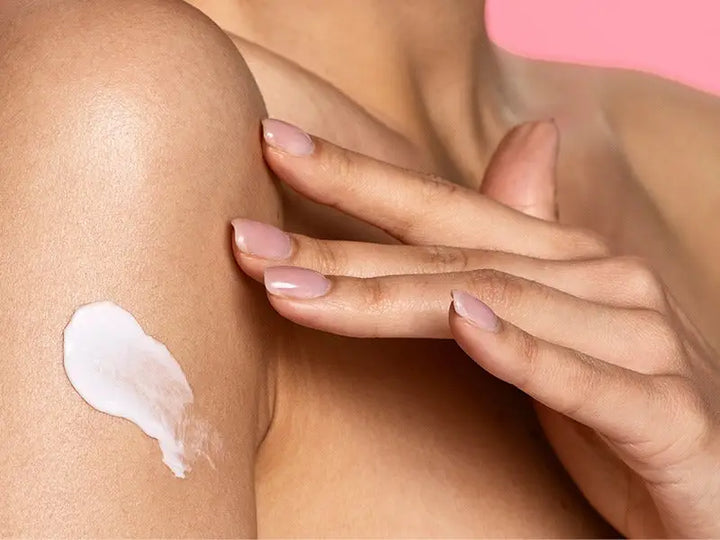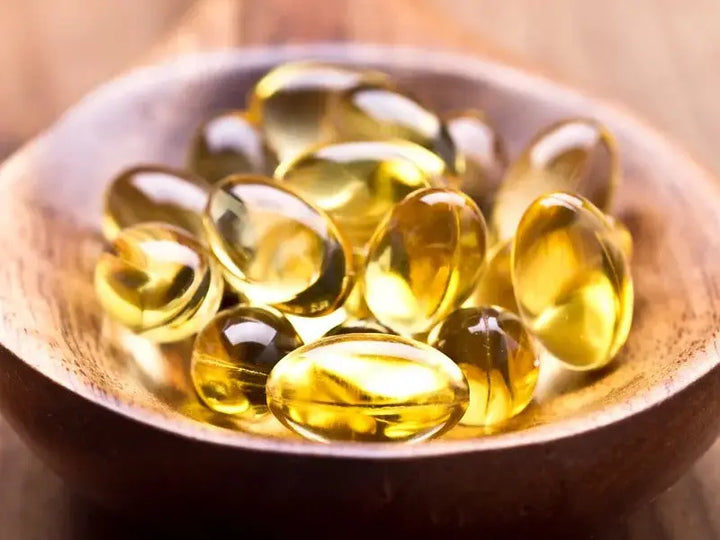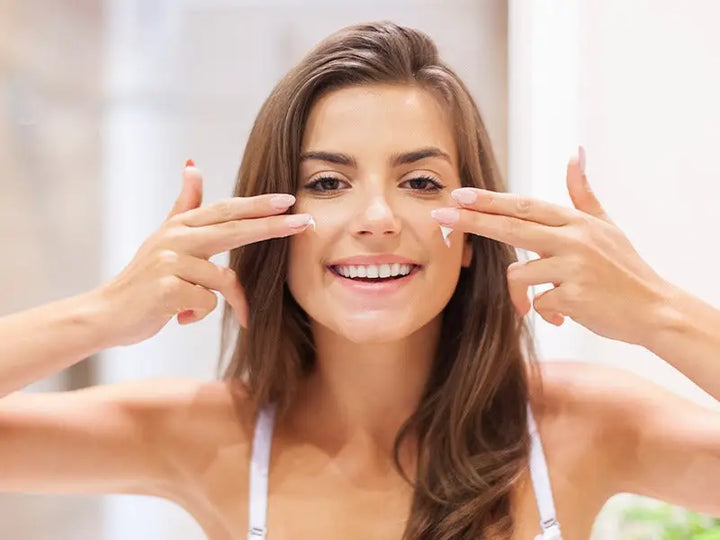The innovation of beauty products has come a long way in the past few years, opening up an exciting world for those looking to enhance their beauty routine. With so many new products on the market, it can be hard to know what ingredients are best for you and your skin type.
Like most people, you probably don't read the ingredients behind your cosmetics and beauty products. But what if we told you that by doing so, you could avoid harmful chemicals and make better choices for your health?
That’s why it’s essential to understand the ingredients before making any purchase. By being aware of what’s in a product and how it could potentially affect your skin, you can make more informed decisions and have a better beauty experience overall.
In this guide, we’ll explain how to read cosmetic and beauty product labels so that you can determine which ingredients are best for your skin type and beauty needs. We’ll also cover the basics of understanding a product label, where to find relevant information about each ingredient, and more. With this knowledge, you can confidently shop for cosmetic products that meet your needs. Let’s get started!
Beauty Products Labelling
Act of 1973 requires that all ingredients be listed on the product label in descending order of concentration. However, there are some exceptions to this rule. For example, colour additives do not have to be listed in order of concentration.
Cosmetic ingredients are usually listed by their chemical name, but they can also be listed by their common name or trade name. For example, the chemical name for water is H₂O, but it can also be listed as aqua or water on a product label. So, when you're reading a product label, look for all possible names of an ingredient.
What's on the Ingredients List?
The ingredients list will usually be found on the back of the product packaging or on a separate insert. The list will start with the word "Ingredients," followed by a list of all the ingredients in the product in order of concentration.
Understanding Beauty Products Labels
When it comes to understanding product labels, here are some terms you should familiarize yourself with:
- INCI Name: This stands for “International Nomenclature of Cosmetic Ingredients” and is used to identify cosmetic ingredients in a standardized way.
- Volume/Weight: This indicates the amount of product inside the container.
- Shelf Life: Also known as “expiry date” or “best before date,” this is the length of time a product can stay safe and effective for use.
- Directions for Use: These are instructions on properly using the product, such as frequency and application methods.
List Order
Cosmetic ingredients are listed in order of concentration. This means that the first ingredient on the list is present in the highest concentration, while the last ingredient is present in the lowest concentration. For example, if water is the first ingredient on a product's list, it means that water makes up the majority of the product.
What do Active ingredients mean?
Active ingredients are the ones that have a direct effect on your skin, whereas inactive or filler ingredients usually fill up space in a product. For example, many cosmetics contain water as an active ingredient, while silicones may be used as an inactive one. Read labels carefully to determine which cosmetic ingredients are active and which are not. The most popular active ingredients are vitamins, minerals, antioxidants, and other nutrients such as alpha-hydroxy acids.
What Does "Natural" Mean?
Just because an ingredient is natural does not mean that it is safe. Natural ingredients can cause skin irritation, allergic reactions, or other problems. So, if you're concerned about an ingredient, it's always best to do some research before using a product that contains it.
In general, “natural” ingredients come from plants, animals, or minerals. However, there is no legal definition of the term "natural," so it can be used pretty freely on product labels.
What Does "Organic" Mean?
The term "organic" has a specific legal definition for food, but there is no such definition for cosmetic products. In general, "organic" ingredients are those that have been grown without the use of synthetic pesticides or fertilizers. However, there is no guarantee that an organic ingredient is any safer than a non-organic ingredient.
USDA Organic. The term "USDA Organic" can only be used on products that contain ingredients that have been certified organic by the United States Department of Agriculture. To use this label, a product must contain at least 95% certified organic ingredients.
Non-GMO Verified.
The term "Non-GMO Verified" indicates that a product does not contain ingredients that have been genetically modified. For a product to use this label, it must meet certain standards set by the Non-GMO Project.
Gluten-Free Beauty Products.
The term "gluten-free" indicates that a product does not contain gluten. Gluten is a protein found in wheat, barley, and rye. Some people are allergic to gluten, and others have a condition called celiac disease. Celiac disease is an autoimmune disorder that can be triggered by eating gluten.
ECO Cert.
ECO Cert is a certification mark that is used on products that contain ingredients that have been sourced sustainably. To use this label, a product must meet certain standards set by ECO Cert.
Beauty Without Bunnies.
The Beauty Without Bunnie's mark is used on products that do not contain any ingredients that have been tested on animals. To use this label, a product must meet certain standards PETA sets.
PAO (Period After Opening)
You might also see a symbol that looks like an open jar with a number and the letter "M" next to it. This symbol is called a PAO (period after opening), indicating how long a product can be used after it has been opened. For example, if a product has a PAO symbol with the number 12 and the letter "M," it means it can be used for 12 months after it has been opened.
FAQ
What are the eight ingredients found in most beauty products?
Most cosmetic products are made up of a combination of different ingredients, including preservatives, synthetic or natural fragrances, colourants, and various types of active ingredients. Some of the most common ingredients found in cosmetics include water, emollients, humectants, emulsifiers, and thickeners. Other ingredients that may be found in cosmetics include surfactants, which help to cleanse the skin and hair, and active ingredients like sunscreens and antioxidants. It's important to note that the specific ingredients found in any given cosmetic product will vary depending on its intended use and the specific formulation of the product.
What is a key ingredient in skin care products?
One key ingredient commonly used in skincare products is retinol, a form of vitamin A that has been shown to improve the appearance of fine lines, wrinkles, and uneven skin tone. It is a powerful antioxidant that helps to stimulate the production of collagen, a protein that gives the skin its structure and support. This can help to improve the overall texture of the skin, making it look smoother and more youthful. It is often used in various skincare products, including creams, serums, and facial masks. Natural retinol refers to an ingredient that is derived from natural sources, such as plants or animals, rather than being synthesized in a laboratory. Some examples of natural sources include fish liver oil, egg yolks, and various fruits and vegetables. The natural form may be less potent than the synthetic one, but it is generally considered gentler on the skin and may have fewer side effects. It is important to note, however, that there is no standardized definition of "natural" when it comes to skincare ingredients, so the term can be used in various ways by different manufacturers.
What is the latest trend in beauty?
It is difficult to say what the latest trend in beauty is, as trends in the beauty m can change quickly and vary depending on location and other factors. Some current trends in the beauty industry include using natural and organic ingredients, the growing popularity of Korean beauty products and techniques, and the increasing focus on personalized skincare products and beauty routines. In general, there seems to be a trend toward more natural, sustainable, and holistic approaches to beauty, with a greater emphasis on self-care and overall wellness.
What are the five basics of skin-care?
The five basic steps of a skincare routine are:
Cleansing: The first step in any skincare routine is cleaning the skin to remove dirt, oil, and other impurities. This helps to unclog pores and prepare the skin for the other steps in the routine.
Toning: Toning helps to balance the skin's pH levels and can help to remove any remaining traces of dirt and oil. It can also help to tighten and refresh the skin, giving it more radiant and youthful skin.
Treating: This step involves using products that target specific skin concerns, such as breakouts, dark spots, or fine lines. These products may contain active ingredients that can help to improve skin.
Moisturizing: Moisturizing is an essential step in any skincare routine, as it helps to keep the skin hydrated and supple. A good moisturizer can help to prevent dryness, flakiness, and other common skin concerns.
Protecting: The final step in a skincare routine is to protect the skin from the sun's harmful UV rays. This can be done by applying broad-spectrum sunscreen with an SPF of at least 30. Sun protection is important for maintaining healthy, youthful-looking skin and preventing sun damage.
What skincare ingredient is most searched?
Some popular skincare ingredients commonly searched for include retinol, bakuchi oil, and vitamin C. These ingredients are known for their ability to improve the appearance of the skin, providing benefits such as reduced wrinkles and fine lines, improved skin tone and texture, and increased hydration. Other commonly searched skincare ingredients include salicylic acid, niacinamide, and alpha hydroxy acids (AHAs).
Which active ingredient is best for glowing skin?
Many active ingredients can help to improve your skin and give it a more radiant, glowing look. Some of the best active ingredients for glowing skin include:
Vitamin C(ascorbic acid): This powerful antioxidant helps to brighten the skin and improve its overall tone and texture. It can also help to reduce the appearance of dark spots and other forms of hyperpigmentation.
Retinol: Retinol is a form of vitamin A that can help to stimulate collagen production, a protein that gives the skin its structure and support. This can help to improve skin elasticity and firmness, giving it a more youthful, radiant appearance.
Hyaluronic acid: This naturally-occurring substance is a powerful humectant, which means it can help to attract and retain moisture in the skin. This can help to keep the skin hydrated and plump, giving it a more radiant, glowing look.
Niacinamide: This form of vitamin B3 has been shown to improve the skin's barrier function, making it more resistant to damage from environmental stressors such as pollution and UV radiation. It can also help to reduce the appearance of fine lines, wrinkles, and other signs of ageing.
Alpha-hydroxy acids (AHAs): AHAs are a group of chemicals commonly used in beauty products to exfoliate the skin. They can help to remove dead skin cells and other impurities, revealing the brighter, smoother skin underneath.
Peptides: Peptides are small molecules that are naturally found in the skin. They help to support the skin's structure and function and can help to improve the appearance of fine lines and wrinkles.
Coenzyme Q10 (CoQ10): CoQ10 is a naturally-occurring antioxidant found in every cell in the body. It can help to protect the skin from damaging free radicals, which can lead to premature ageing.
Green tea: Green tea is a natural source of antioxidants and other beneficial compounds that can help to protect the skin from damage and improve its overall appearance. It has anti-inflammatory properties and can help to reduce redness, and has been shown to have anti-ageing properties.
When it comes to ingredients in cosmetic products, knowledge is power. By learning how to read ingredient labels, you can make informed decisions about what products to use and what to avoid. And if you're ever unsure about an ingredient, remember that you can always do some research to find out more.














